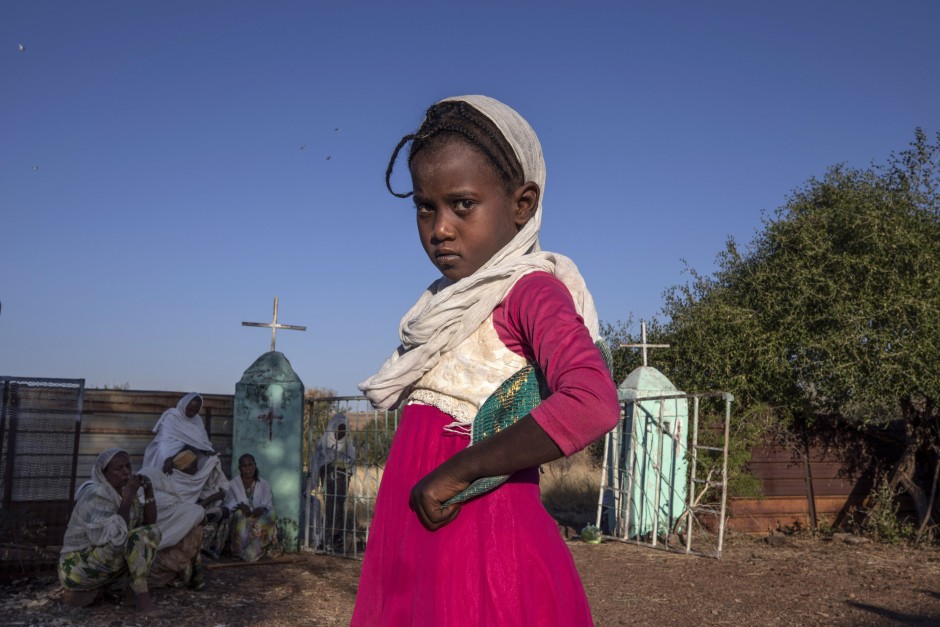
Et is this one topic that made Edna Adan popular on the African continent. In Somalia, which was still united at the time, the 85-year-old was the first woman to publicly name female genital mutilation. In her biography she describes in detail how she experienced this herself as a young girl and how ill she became afterwards. More than 30 years later, at the end of the 1970s, she experienced for the first time that the serious consequences were discussed during a conference of the World Health Organization (WHO) in Sudan’s capital Khartoum.
The nurse and midwife had found her mission. In Somalia at the time, almost every girl was subjected to the brutal practice. The number is now a good 50 percent, says the activist and founder of the hospital of the same name in Hargeisa. On the one hand, that sounds like a success. But Edna Adan says: “It’s not the success I was hoping for.”
More than 200 million affected worldwide
Genital mutilation is considered a rite of passage from girl to woman in more than 30 countries. First of all, in Egypt, Sudan, 26 countries in West and East Africa, as well as in Iraq, Yemen, Indonesia and Malaysia. This is a serious violation of human rights in which the external and/or internal labia and clitoris are partially or completely removed and the vagina is partially sewn shut, leaving an opening the size of a pinhead.
According to the World Health Organization (WHO), more than 200 million suffer from the consequences. 8,000 girls suffer the cruel tradition every day. The number of unreported cases is likely to be much higher.
Those affected not only suffer from lifelong pain, psychological traumatization and problems during childbirth. They can also suffer from chronic kidney infections or bladder infections, among other things, and often suffer from painful menstrual problems. The act of mutilation is usually performed by women without medical training, sterilized knives and without anesthesia. The pain is described as unbearable, and wounds often become infected.
Woman’s sex drive is suppressed
This also robs women of their right to free and self-determined sexuality. Sexual intercourse after this procedure is extremely painful and sexual sensations are severely impaired due to the destruction of nerve tissue. Why do cultures choose this intervention? By removing the clitoris, the woman’s sex drive is supposed to be suppressed. Clitoral mutilation is the most brutal expression of patriarchal structures, denying women the right to their sexuality because their culture is obsessed with controlling their bodies. This tradition comes from countries where female sexuality is taboo and demonized and communities derive a claim to women’s bodies.
It often helps when well-known and respected women talk publicly about how they themselves had to suffer genital mutilation as girls. The internationally popular singer Fati Mariko does this in Niger. She made the short film “The Silence of the Knife”, which gives a relentless insight into the suffering of the victims.
“I was seven years old at the time and I couldn’t do anything about it,” says Mariko. Her mother also remembers: “Then she got presents and didn’t cry at all.” The tears only came later – and then again and again, for a lifetime.
Pandemic has made the situation worse
According to the German Foundation for World Population (DSW), there have been setbacks in the fight against genital mutilation in recent years, including the measures against the corona pandemic and the climate crisis. “Due to school closures during the pandemic, the girls were deprived of an important protective space,” explained DSW Deputy Managing Director Angela Bähr. And droughts put families in such a precarious position that daughters getting married appears to be an economic necessity. Genital mutilation is often a prerequisite for marriage.
In Germany more and more cases of FGM
In Germany, around 70,000 women are living with female genital mutilation, and up to 15,000 girls are at risk of it. More and more circumcised women are coming to Germany from Somalia and Eritrea – the doctors are hardly prepared for this. The threat of genital mutilation is now a reason for asylum.
The gynecologist Eiman Tahir (56) helps affected women in her Munich practice. According to her, the traumata of her patients are not recognized enough – especially by the health insurance companies. This now threatened their existence. The problem: According to the case-based flat rate principle, all treatments are paid equally. No matter how long it takes. But gynecological treatment for a traumatized woman who has been a victim of genital mutilation takes longer than average.
Tahir works longer for the money. That’s why she received a recourse claim from the health insurance company in front of some. The accusation: she would treat “uneconomically” and should pay €130,000. According to the announcement, the needs of the patients, some of whom travel from other federal states, far exceed the medical supply.
According to the doctor, there can only be a real change in thinking about female genital mutilation through education. The cruel tradition is ancient. You can’t end it in a very short time, certainly not with laws. “She needs to get out of her head.”
According to German law, carrying out female genital mutilation is a criminal offense – even if it is carried out abroad.









